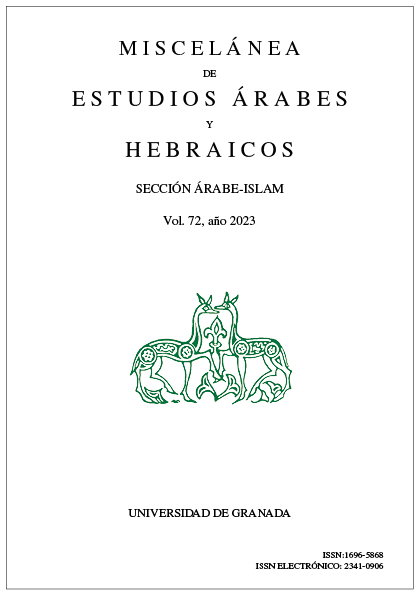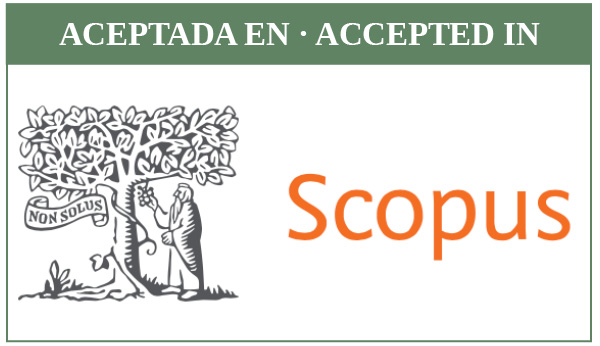Two Theoretical Models for Studying Islamic Societies: M. Hodgson and M. Acién
DOI:
https://doi.org/10.30827/meaharabe.v72.22491Keywords:
Islamicate, formación social islámica, civilización, mundo islámico, Islamicate, Islamic social formation, civilization, Islamic worldAbstract
One of the problems that arises when studying Islamic societies is precisely that they all are designated with a term that refers to religion, even when the study has little or nothing to do with religion, and the denomination does not allow for an explanation of the enormous variety of histories of the people who fall under it. Inthe 1960s, Marshall Hodgson tried to solve this problem by creating new terms to differentiate the social sphere, the artistic sphere, etc. from the religious sphere. These terms are becoming more widely used today, but without taking into consideration the comments and limitations suggested by Hodgson. In the nineties, Manuel Acién embarked on a similar project, although his work sought to develop the elements comprising the Islamic social formation during the Middle Ages that would make it possible to differentiate it from other historical stages, without religion as a defining element. In this study, we analyze these author’s proposalsto address the problem and open a debate about the extent to which it is possible to use the terms coined by the first author to define the concepts of the second.
Downloads
References
ACIÉN ALMANSA, Manuel. “Sobre el papel de la ideología en la caracteriza- ción de las formaciones sociales. La formación social islámica”. Hispania, LVIII/3, 200 (1998), pp. 915-968. Versión en inglés incluida en Manuel Acién. Obras escogidas. Jaén: Universidad de Jaén, 2020, vol. 1.
— y VALLEJO TRIANO, Antonio. “Urbanismo y estado islámico: de Corduba a Qurṭuba-Madīnat al-Zahrā’”. En P. CRESSIER y M. GARCIA ARENAL (eds.). Genèse de la ville islamique en al-Andalus et au Maghreb occidental. Madrid: Casa de Velázquez-CSIC, 1998, pp. 105-136.
—. Entre el feudalismo y el islam. ‘Umar ibn Hafsun en los historiadores, en las fuentes y en la historia. Jaén: Universidad de Jaén, 1997. Incluido en Manuel ACIÉN. Obras escogidas. Jaén: Universidad de Jaén, 2020, vol. 1.
AHMED, Shahab. What Is Islam? The importance of being Islamic. Princeton: Princeton University, 2016.
ARNASON, Johann P. “Marshall Hodgson’s civilizational analysis of Islam: the- oretical and comparative perspectives”. En Johann P. ARNASON, Armando SALVATORE, y George STAUTH (eds.). Islam in process. Historical and civilizational perspectives, yearbook of sociology of Islam. Bielefeld: Trans- cript Verlag, 2006, vol. 7, pp. 23-47.
—; SALVATORE, Armando y STAUTH, George. “Introduction”. En Johann P. ARNASON; Armando SALVATORE, y George STAUTH (eds.). Islam in process. Historical and civilizational perspectives, yearbook of sociology of Islam. Bielefeld: Transcript Verlag, 2006, vol. 7, pp. 8-19.
CHALMETA, Pedro. “Derecho y práctica fiscal musulmana. El primer siglo y medio”. En Xavier BALLESTÍN y Ernesto PASTOR (eds). Lo que vino de Oriente. Oxford: Archaeopress, BAR, 2013, pp. 1-16.
CONTADINI, Anna (ed.). The Pisa griffin and the Mari-Cha Lion. Metalwork, art and tecnology in the medieval Islamicate Mediterranean. Pisa: Pacini Edi- tore, 2018.
DOMÉNECH, Carolina y GUTIÉRREZ, Sonia (eds.). El sitio de las cosas: la Alta Edad Media en contexto. Alicante: Universidat d’Alacant, 2020.
EISENSTADT, Shamuel N. “Public spheres and political dynamics in historical and modern Muslim societies”. En Johann P. ARNASON, Armando SAL- VATORE, y George STAUTH (eds.). Islam in process. Historical and civili- zational perspectives, yearbook of sociology of Islam. Bielefeld: Transcript Verlag, 2006, vol. 7, pp. 306-317.
FIERRO, Maribel. “Cuatro preguntas en torno a ‘Umar Ibn Ḥafṣūn”. Al-Qanṭara, XVI (1995), pp. 221-257.
GARCÍA GÓMEZ, Emilio. Foco de antigua luz sobre La Alhambra desde un texto de Ibn al-Jatib de 1362. Madrid: Publicaciones del Instituto Egipcio de Estudios Islámicos, 1988.
GARCÍA SANJUÁN, Alejandro. “Manuel Acién Almansa. Medievalista pionero y renovador de la historia de Al-Andalus”. Medievalismo, 26 (2016), pp. 135- 153.
GLICK, Thomas F. From Muslim fortress to Christian castle. Social and cultural change in medieval Spain. Manchester y Nueva York: Manchester University Press, 1995.
GUICHARD, Pierre, Al-Andalus. Estructura antropológica de una sociedad is- lámica en Occidente. Barcelona: Barral Editores, 1976.
HODGSON, Marshall G. S. The venture of Islam: conscience and history in a world civilization, (volume i. the classical age of Islam). Chicago and London 1977. https://archive.org/details/ventureofislamco00hodg [Consultado el 13/ 07/2019].
HOURANI, Albert, “The venture of Islam: conscience and history in a world civ- ilization by Marshall G.S. Hodgson (reviewed work(s)”. Journal of Near Eastern Studies, 37.1 (1978), pp. 53-62.
JASPERS, Karl. Origin and goal of history. Londres: Routledge Revivals, 2011. Primera edición fechada en 1949.
LAGARDERE, Vincent. Histoire et société en occident musulmana au moyen âge. Analyse du Mi‘yār d’al-Wanšarīsī. Madrid: Casa de Velázquez, 1995.
LÓPEZ MARTÍNEZ DE MARIGORTA, Eneko. Mercaderes, artesanos y ule- mas. Las ciudades de las coras de Ilbira y Pechina en época Omeya. Jaén: Universidad de Jaén, 2019.
MANZANO MORENO, Eduardo. “Entre el feudalismo y el islam, una nota críti- ca”. Hispania, 118 (1994), pp. 1139-1144.
MANZANO MORENO, Eduardo. “Why did Islamic medieval institutions be- come so different from western medieval institutions?”. Medieval Worlds, 1 (2015), pp. 118-137.
—. “Introducción”. En Manuel ACIÉN ALMANSA. Obras escogidas. Jaén: Universidad de Jaén, 2020, vol. 1, pp. 11-15.
PAULINO MONTERO, Elena. “Islamicate elements in the Velasco palaces: constructing a Castilian court architecture”. The Medieval Journal, 15,2 (2012), pp. 355-383.
RAHIMI, Babak. “The Middle Period: Islamic axiality in the age of Afro- Eurasian transcultural hybridity”. En Johann P. ARNASON, Armando SAL- VATORE, y George STAUTH (eds.). Islam in process. Historical and civili- zational perspectives, yearbook of sociology of Islam. Bielefeld: Transcript Verlag, 2006, vol. 7, pp. 48-67.
VALLE, Carlos del. “Sobre las lenguas de los judíos en la España visigoda y al- Andalus”. Sefarad, 63 (2003), pp. 183-193.
WICKHAM, Chris. “The other transition: from the ancient world to feudalism”. Past and Present, 103 (1984), pp. 3-36.
—. Land and power. Studies in Italian and European social history, 400-1200. Londres: British School at Rome, 1994.
Downloads
Published
How to Cite
Issue
Section
License
The authors publishing their work in this journal agree to the following terms and conditions:
1. The authors retain the copyright and give the journal the right to be the first publication of the work and also to be licensee under a Creative Commons Attribution License which allows others to share the work, provided the author of the work and the initial publication in this journal are acknowledged.
2. Authors may make additional agreements separately for the non-exclusive distribution of the version of the work published in the journal (for example, putting it in an institutional repository or publishing it in a book), with acknowledgement of its initial publication in this journal.
3. Authors are allowed and encouraged to electronically disseminate (for example, in institutional repositories or on their own web page) the published version of their works (publisher's post-print version) or, if not possible, the author's reviewed and accepted post-print version. This is to facilitate productive exchanges, and allow for earlier and greater citation by third parties of the published works (See The Effect of Open Access).
4. The journal accepts no responsibility for the opinions expressed by the authors.















